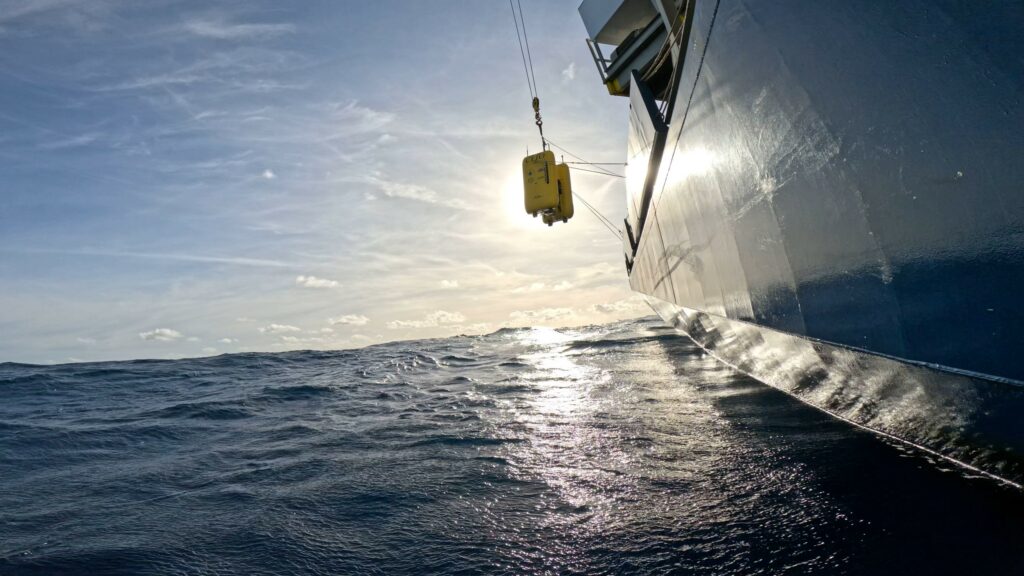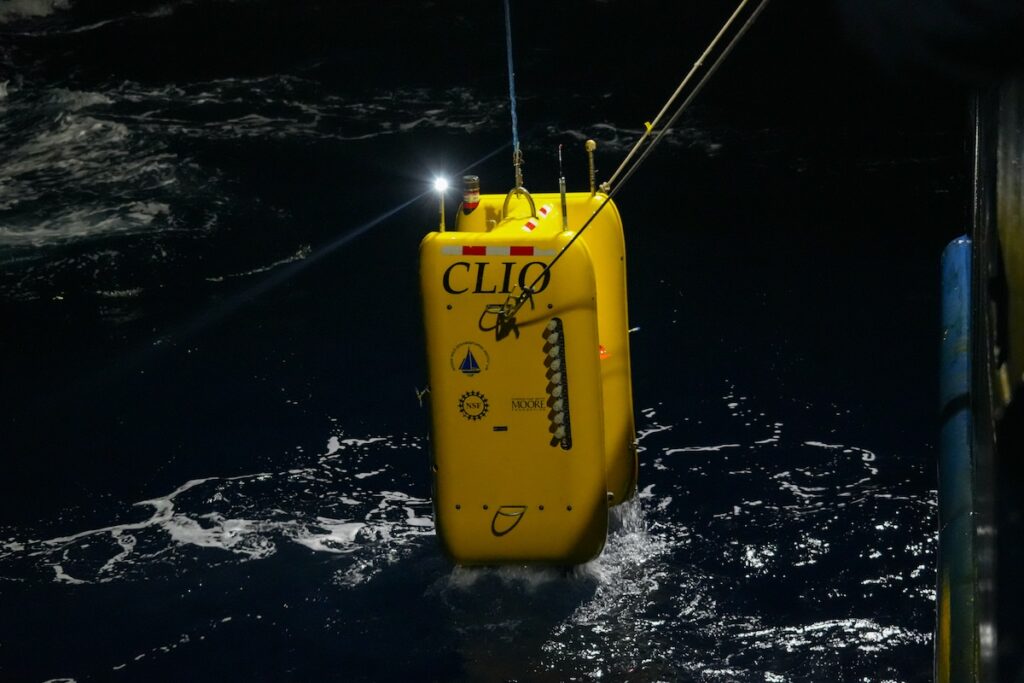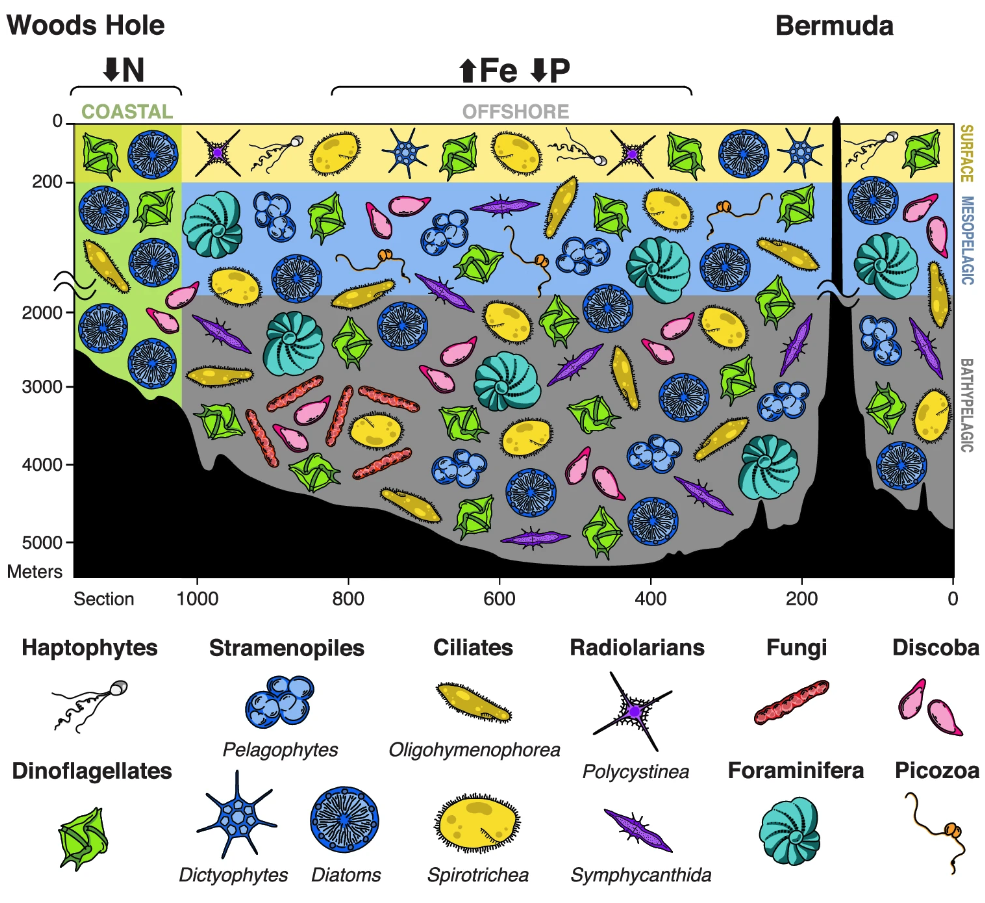
New research led by University of Georgia Skidaway Institute of Oceanography (SkIO) scientist Natalie Cohen shows how microeukaryote communities in the western North Atlantic Ocean change with depth, from phytoplankton in the surface to fungi in the deep sea, offering new insights into the crucial, yet obscure microorganisms.
There are billions of microeukaryotes living in the world’s oceans. While it is widely understood that these tiny, single-celled organisms are essential for ocean ecosystems and climate regulation, much less is known about how microeukaryotes live or interact with their surroundings, particularly in the deep waters far from shore.
Findings from a study recently published in Nature Communications help narrow that knowledge gap, specifically regarding microeukaryotes living in the western North Atlantic Ocean. The study, led by SkIO scientist Natalie Cohen, shows shifts in microbial communities with ocean depth.
“I think one of the coolest trends,” Cohen said,” is as you go deeper into the ocean, you can really see the shift in the community composition from surface communities, where there are diatoms and haptophytes, to more heterotrophic taxa, like what we call picozoa, foraminifera and radiolarians. Then, right when we get to the deeper parts of the ocean, we see fungi.”
To come to their findings, the research team spent just under two weeks on the R/V Atlantic Explorer, traveling from Bermuda to the Northeast United States, just off the coast of Massachusetts.

Throughout the trip, the researchers deployed Clio, an autonomous underwater vehicle, which uses special filters to collect samples of biological materials in the ocean. In addition to sampling spatially — from Bermuda to Massachusetts — the scientists also sampled at a range of depths.
“This was Clio’s debut,” said Cohen. “Clio is about the size of a refrigerator. It gets deployed off of the ship using the ship’s A-frame. By satellite, the engineers can figure out where to pick it up. We have sent it down to 4,100 meters, but it can go as deep as 6,000 meters.”
The scientists sequenced protein and RNA from the collected samples to determine the type of microeukaryotes present. Based on the proteins, there was a clear difference in terms of community composition of microeukaryotes at various depths, Cohen explained. However, that difference wasn’t as strong in the RNA. The RNA showed a more even mix throughout the water column, with different coverage across organisms. The study thus led to new insights into the agreement between proteins and RNA.
“The strength of this study was the scale, collecting data from so many sites, depths, both transcripts and protein pools, and then building that conceptual image of how these organisms were interacting with their environment,” said Cohen.

About SkIO
The UGA Skidaway Institute of Oceanography (SkIO) is a multidisciplinary research and training institution located on Skidaway Island near Savannah, Georgia. The Institute was founded in 1967 with a mission to conduct research in all fields of oceanography. In 2013, SkIO was merged with the University of Georgia. The campus serves as a gateway to coastal and marine environments for programs throughout the University System. The Institute’s primary goals are to further the understanding of marine and environmental processes, conduct leading-edge research on coastal and marine systems, and train tomorrow’s scientists. For more information, visit www.skio.uga.edu.


